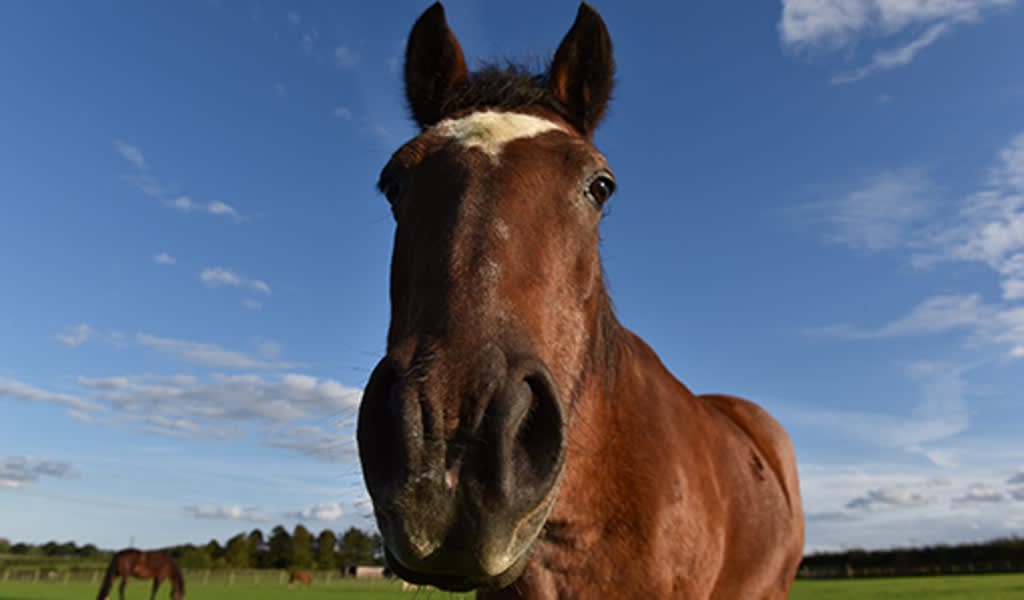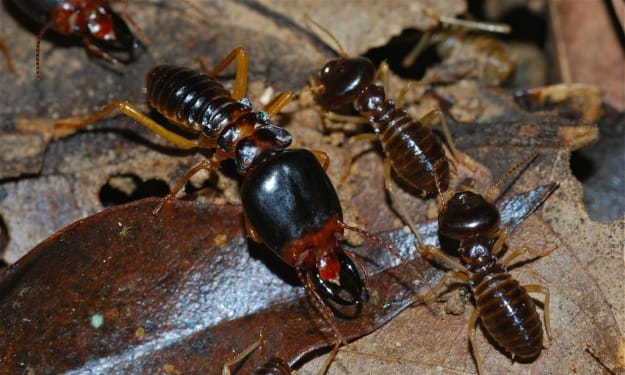Competition Horses and Disease
Equine Flu and Strangles

Competition horses travelling regularly to shows are prone to catching any disease that is prevalent at the time, particularly those that are viral diseases passed on by contact or through the air. Equine Influenza and Strangles are the two diseases most commonly caught on the showground.
Equine Influenza
Equine influenza is a highly contagious viral disease that affects the upper and lower respiratory tract of the horse caused by different strains of influenza virus. Equine flu spreads rapidly and has, probably, the most debilitating effects, but no horse has reportedly died of the uncomplicated virus. One horse with Equine flu can be brought together with several healthy horses, even up to the hundreds, and get them all sick within a week. Equine influenza virus (EIV) causes a respiratory infection spread by aerosol, which is very similar to human influenza. Droplets containing the virus are inhaled, as a result of which the virus infects cells lining the throat and lungs. The virus replicates rapidly, causing cell damage and causing inflammation, leading to the symptoms of the disease. There are two subtypes of influenza A virus known to cause influenza in horses, these are the subtypes H7N7 (formerly known as A/equine 1) and H3N8 (formerly known as A/equine 2).
The virus spreads easily from horse to horse as a result of the droplets released into the air by coughing, from nasal discharge and from contact with things like infected brushes and rugs. The disease is highly contagious and there is almost 100% infection rate in an unvaccinated group of horses that have not been exposed previously to the virus. Flu can be carried by the wind a great distance and affect horses miles away from the infected one.
The disease is now endemic, but it does mutate to form new strains, which, once it has been developed abroad and then introduced to this country act as epidemic infections. Foreign strains of the disease can cause anything from local to national outbreaks.
Symptoms
The symptoms of Equine flu include temperature rise up to 41°C (106°F) for 1-3 days, which is often undetected, a harsh, dry cough of that comes on suddenly and then persists for 2-3 weeks or more, a clear nasal discharge, which progresses to a thick, green-yellow discharge, lethargy and depression and a loss of appetite. Other signs can include anorexia, increased respiratory rate and harsh respiratory sounds and conjunctivitis, muscle stiffness and limb oedema. Equine flu can sometimes result in pneumonia, which is caused from secondary bacterial infection. Complications such as heart muscle disease and broken wind sometimes occur. It is most likely that causing the horse stress, bad weather, transporting, and exercising the horse will make the flu worse, as will poor nutrition, overcrowding and poor management. Equine flu can cause severe damage to the specialised cells of the muco-ciliary "escalator" that help clear debris and foreign material from the airway.
Treatment
The treatment of Equine flu will include rest for a minimum of 3 weeks, reduction environmental dust/moulds, antibiotics, anti-inflammatory drugs to reduce fever and muscle stiffness, and bronchodilators and mucolytics to ease respiration.
Vaccinations are an effective and cost efficient way of protecting your horse from Equine flu. This in turn helps in the prevention of the spread of the diseases should an outbreak occur. Most vaccines on the market today protect against both Equine flu and tetanus in the same vaccination. The initial course for the vaccinations comprises three injections at strict intervals. The first vaccination is followed 4 to 6 weeks later by a second, then 150 to 215 days after the second vaccination the third needs to be administered. After this initial course a booster vaccination is required annually within 365 days of the previous vaccination. The vaccination intervals are designed to enable the horse's immune system to immediately recognize and mount an effective response to an invading flu virus.
To help ensure that horses do not contract Equine flu, good yard management should be practiced. New arrivals to the stable yard should isolated yard for 3 weeks, good ventilation and dust-free regimens in stables should be maintained and it should be ensured that all horses in a stable yard are correctly vaccinated. Always remember that an infected horse is itself a source of infection to others and it is important to make every effort to isolate infected animals.
Strangles
Strangles is a highly contagious and dangerous infection of the upper respiratory tract which is caused by the bacteria, Streptococcus equi. It mainly affects the lymph nodes. It is spread to other horses by direct contact and can be spread by contaminated food, water and equipment. Young horses under the age of 5 are more susceptible than older horses and it most often occurs when the weather is cold and damp. Once a horse becomes infected the symptoms usually appear within 2 to 6 days. Horses that are already suffering from a slight viral infection may be more susceptible.
Symptoms
The typical symptoms of strangles include fever, loss of appetite, soft cough, purulent nasal discharge and swollen lymph nodes of the face, which may often form abscesses and burst. The swollen glands can restrict the airways, giving rise to the name "Strangles." In some cases, however, the disease may be very mild, causing only slight nasal discharge without a raised temperature or swollen glands. A carrier state without any obvious clinical signs is also possible.
Strangles develops when bacteria enter the nose or mouth and attach at the back of the throat. The bacteria release of toxins and enzymes and fever develops. The bacteria spread to draining lymph nodes (glands), which swell and may form abscesses.
In uncomplicated cases, the disease usually runs its course in about 3 weeks. Infection is usually restricted to the head and neck and most horses recover uneventfully. In up to 8% of cases, it may spread to other organs of the body, and is then known as "bastard strangles", which can be fatal. Abscesses can occur anywhere in the body, but are most often found in the lungs, abdominal lymph nodes, liver, kidney, spleen and brain.
Another complication, which is usually fatal, but less common, is "purpura haemorrhagica." This is an immune-complex reaction to the streptococcal antigen. Affected horses are depressed, and have marked swelling of the legs and belly. They may bleed into the gums and other organs such as the lungs.
Other complications that have been reported include laryngeal paralysis, infection of the heart (endocarditis, myocarditis) and bronchopneumonia.
It is important to consult your vet if you suspect your horse has Strangles. The history, clinical signs and the culture results of a nasal swab or fluid from an enlarged gland will all play a part in making an accurate diagnosis. It is important to confirm the diagnosis as a nasal discharge could be the result of many viral or other bacterial infections. A foreign body (e.g. grass seed) could also cause gland swelling and abscesses around the throat area.
Strangles is difficult to treat effectively because antibiotics do not penetrate the centre of an abscess where there is no blood supply. However, resistance to antibiotics commonly used against S equi is very rare, and so early treatment with antibiotics may be useful if lymph nodes have not become enlarged.
In the early stages of the disease, before abscesses have started forming, penicillin is very effective at killing the bacteria responsible. Once an abscess has formed it is best to allow the abscess to burst. Antibiotics at this stage tend to "damp down" the infection, but not get rid of it completely, so it may flare up again once treatment stops. Fomenting the abscessed lymph nodes with hot cloths or compresses may encourage them to burst and drain. Most cases recover completely and are soon free from infection.
The incubation period of strangles is usually less than 14 days. However, the interval between new cases in an outbreak can be far longer - up to 3 weeks or more - because infected horses can excrete S. equi for long periods after clinical signs have disappeared.
Treatment
Detecting infected horses early and isolating them until they are free from infection can control the spread of infection. Shedding of S. equi usually ends quickly after recovery but may be sporadic.
To detect carrier horses, it is recommended that 3 nasopharyngeal swabs are taken at 5-7 day intervals over a 2-week period and culturing the swabs for S. equi. Three negative swabs indicate freedom from infection in the great majority of cases but not all. Recovered cases may still be carriers despite undergoing three negative swab tests.
Younger horses should be monitored closely as they are most susceptible to infection.
Infected horses should be isolated as should those that had been in contact with them. Strict hygiene measures should be employed, eg dedicated equipment for each group, disinfection for stable staff, thorough disinfection of stable and equipment. All movement of horses on and off the premises should be stopped. Stables and paddocks should be left empty for 4 weeks following the removal of an infected horse.
Horses with strangles should be rested and fed soft, moist, palatable feed. It may also be necessary to give pain relief. Swollen glands may be poulticed to help them to burst. The vet may lance and drain infected abscesses and they may prescribe antibiotics. It is important to give the correct dose of antibiotic for at least a 10-14 day period.
Horses that have been in contact with sick animals or have shared the same pasture should be monitored. Their temperatures should be checked twice a day. An increase in temperature could indicate that the horse is about to develop the disease. Antibiotic treatment is likely to be effective at this stage.
Nasopharyngeal swabs should be taken from recovered cases and in-contact animals on three occasions at weekly intervals. These samples should be cultured for Streptococcus equi.
The horses should be placed in 2 groups according to results:
a) non-infectious: (S equi is not cultured.)
b) potentially infectious: (S equi is cultured.)
The infected group should be monitored by examining the guttural pouches. Bacterial culture should be carried out on samples from the guttural pouches.
Treat any carriers:
a) the guttural pouches should be flushed out to remove any infectious discharges.
b) antibiotics should be given (usually penicillin or potentiated sulphonamides.)
Over the years there have been many attempts to produce a vaccine to protect against strangles. There is no vaccine currently available in the UK. Vaccines available in other parts of the world frequently produce adverse side effects and provide poor immunity against experimental infection.
Approximately 75% of horses develop immunity following natural infection that may last for several years but the other 25% fail to produce an immune response, becoming vulnerable to reinfection within 6 to 12 months.
The only way to prevent strangles is to isolate new arrivals to the yard and any horse known to have suffered from strangles or to have been in contact with a horse with strangles should be isolated for up to one month.
The widespread occurrence and potential severity of the disease makes strangles a disease that no horse owner can afford to ignore. New information about horses that are carriers of the infection without showing any clinical signs has resulted in improved control measures. With the help of good management procedures, you should be able to reduce the risk of strangles on your property.
About the Creator
Clare Scanlan
I am passionate about writing! Passionate about animals, especially horses, passionate about women's and children's rights!






Comments
There are no comments for this story
Be the first to respond and start the conversation.